From my understand it appears you are trying to extract/select a dynamic object that only has the desired properties/columns.
This can be achieved by building a dynamic expression/function to apply to the Select
The following builds an expression based on the model type and the provided properties
static class DynamicExtensions {
public static IQueryable<dynamic> SelectDynamic<TModel>(this IQueryable<TModel> query, ISet<string> propertyNames) {
var selector = query.BuildSelectorFor(propertyNames);
return query.Select(selector);
}
static Expression<Func<TModel, dynamic>> BuildSelectorFor<TModel>(this IQueryable<TModel> query, ISet<string> propertyNames) {
var modelType = typeof(TModel);
var properties = modelType.GetProperties().Where(p => propertyNames.Contains(p.Name));
// Manually build the expression tree for
// the lambda expression v => new { PropertyName = v.PropertyName, ... }
// (TModel v) =>
var parameter = Expression.Parameter(modelType, "v");
// v.PropertyName
var members = properties.Select(p => Expression.PropertyOrField(parameter, p.Name));
var addMethod = typeof(IDictionary<string, object>).GetMethod(
"Add", new Type[] { typeof(string), typeof(object) });
// { { "PropertyName", v.PropertyName}, ... }
var elementInits = members.Select(m =>
Expression.ElementInit(addMethod, Expression.Constant(m.Member.Name), Expression.Convert(m, typeof(object))));
// new ExpandoObject()
var newExpando = Expression.New(typeof(ExpandoObject));
// new ExpandoObject() { { "PropertyName", v.PropertyName}, ... }
var expando = Expression.ListInit(newExpando, elementInits);
// (TModel v) => new ExpandoObject() { { "PropertyName", v.PropertyName}, ... }
var lambdaExpression = Expression.Lambda<Func<TModel, dynamic>>(expando, parameter);
return lambdaExpression;
}
}
This takes advantage of ExpandoObject whose members can be dynamically added and removed at run time.
The following test was used as an example of how the above function is invoked.
[TestMethod]
public void DynamicList() {
var list1 = new List<Person>
{
new Person{ Gender = "Male", Age = 10, FirstName = "Nama1", SampleNumber = 12},
new Person{ Gender = "Male", Age = 12, FirstName = "Nama2", SampleNumber = 13},
new Person{ Gender = "Female", Age = 13, FirstName = "Nama3", SampleNumber = 14},
new Person{ Gender = "Male", Age = 14, FirstName = "Nama4", SampleNumber = 15},
};
var keys = new string[] { "Age", "Gender", };
var nList = list1.AsQueryable().SelectDynamic(new HashSet<string>(keys));
foreach (IDictionary<string, object> row in nList) {
var msg = $"{{ {keys[0]} = {row[keys[0]]}, {keys[1]} = {row[keys[1]]} }}";
Debug.WriteLine(msg);
}
}
and produces the following output
{ Age = 10, Gender = Male }
{ Age = 12, Gender = Male }
{ Age = 13, Gender = Female }
{ Age = 14, Gender = Male }
The dynamic objects can be used in the View and it is a simple matter of calling the desired members.
For example suppose you have a model as follows
public class MyViewModel {
public string MyProperty { get; set; }
public string[] Keys { get; set; }
public List<dynamic> MyDynamicProperty { get; set; }
}
that was populated with data and given to the view
var list1 = _reportRepository.ShowMasteView();
var keys = new string[] { "Age", "Gender", };
var nList = list1.AsQueryable().SelectDynamic(new HashSet<string>(keys));
var viewModel = new MyViewModel {
MyProperty = "Hello World",
MyDynamicProperty = nList.ToList(),
Keys = keys
};
return View(viewModel);
Then in the view you can use the model as desired, casting to get access to members in the expando object.
@model MyViewModel
...
<h2>@Model.MyProperty</h2>
<table>
<tr>
@foreach(string key in Model.Keys) {
<th>@key</th>
}
</tr>
@foreach (IDictionary<string, object> row in Model.MyDynamicProperty) {
<tr>
@foreach(string key in Model.Keys) {
<td>@row[@key]</td>
}
</tr>
}
</table>
